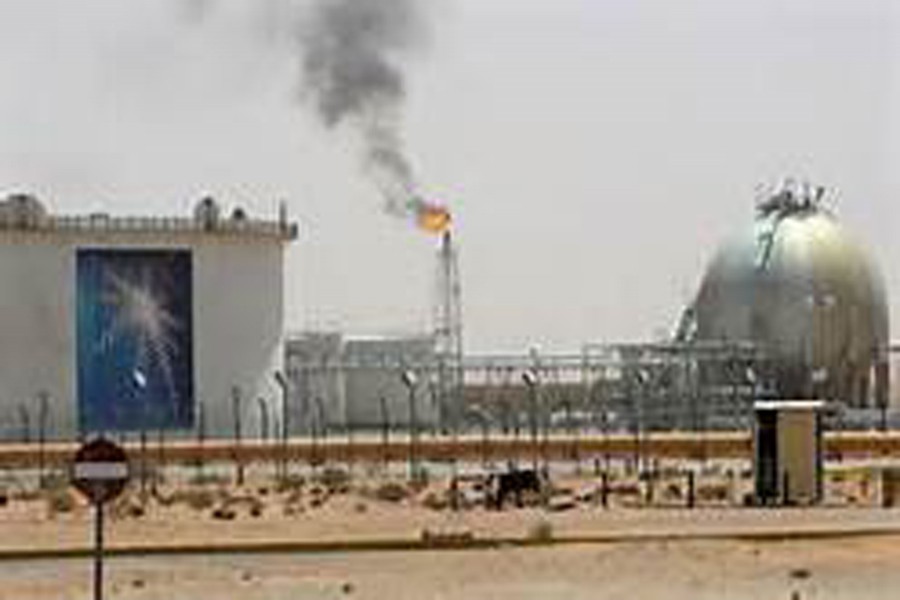Top oil exporter Saudi Arabia is expected to keep the February price for Arab Light crude steady, close to the highest in more than three years, while lowering prices for medium and heavy grades, a survey by Reuters showed on Tuesday, reports Reuters.
Robust spot crude demand and stronger margins for middle distillates will underpin Saudi crude prices, but the producer was unlikely to raise prices further as Asia's "demand is expected to fall because of spring maintenance", one of the four respondents said in the survey.
The official selling price (OSP) for Saudi's flagship Arab Light crude could pause in February, after rising in January for the fifth straight month to its highest since September 2014, the survey showed.
Backwardation between first and third month cash Dubai was relatively unchanged in December from the previous month, the respondents said. In a backwardated market, prompt prices are higher than those in future months, indicating strong demand for immediate supplies.
A widening of Brent's premium to Dubai reduced arbitrage supplies from the Atlantic Basin and spurred Asia's demand for Middle East and Russian crude, pushing spot premiums for these grades in February to multi-month highs.
Still, Saudi Aramco could trim February prices for Arab Medium and Arab Heavy on weaker returns from fuel oil production, the respondents said. The average fuel oil margins in Asia fell about 50 per cent in December from the previous month, Reuters data showed. Saudi crude OSPs are usually released around the fifth of each month, and set the trend for Iranian, Kuwaiti and Iraqi prices, affecting more than 12 million barrels per day (bpd) of crude bound for Asia.
Saudi Aramco sets its crude prices based on recommendations from customers and after calculating the change in the value of its oil over the past month, based on yields and product prices.
Saudi Aramco officials as a matter of policy do not comment on the kingdom's monthly OSPs.
Meanwhile, oil prices posted their strongest opening to a year since 2014 on Tuesday, with crude rising to mid-2015 highs amid large anti-government rallies in Iran and ongoing supply cuts led by OPEC and Russia.
US West Texas Intermediate (WTI) crude futures CLc1 were at $60.63 a barrel at 0747 GMT, up 21 cents, or 0.4 per cent, after hitting $60.74 earlier in the day, the highest since June 2015.
Brent crude futures LCOc1, the international benchmark, were at $67.18 a barrel, up 31 cents, or 0.5 per cent, after hitting a May 2015 high of $67.29 a barrel earlier in the day.
It was the first time since January 2014 that the two crude oil benchmarks opened the year above $60 per barrel.
Anti-government protesters demonstrated in Iran on Sunday in defiance of a warning by authorities of a crackdown, extending for a fourth day one of the most audacious challenges to the clerical leadership since pro-reform unrest in 2009.
Even without the unrest in Iran, which is a major oil exporter, market sentiment was bullish.
"Falling inventories globally and strong economic growth offset the restart of the Forties pipeline and the resumption of production following a pipeline outage in Libya," said Jeffrey Halley, senior market analyst at futures brokerage Oanda in Singapore. The 450,000 barrels per day (bpd) capacity Forties pipeline system in the North Sea returned to full operations on Dec 30 after an unplanned shutdown.
Oil markets have been supported by a year of production cuts led by the Middle East-dominated Organisation of the Petroleum Exporting Countries (OPEC) and Russia. The cuts started in January 2017 and are scheduled to cover all of 2018.
U.S. commercial crude oil inventories have fallen by almost 20 per cent from their historic highs last March, to 431.9 million barrels.
Strong demand growth, especially from China, has also been supporting crude.
Only rising U.S. production, which is on the verge of breaking through 10 million bpd, is somewhat hampering the outlook into 2018.
"We think U.S. tight oil production growth warrants close monitoring as it could spoil OPEC's market-balancing efforts, pushing the market into surplus in 2018," Barclays bank said on Tuesday.
U.S. oil production C-OUT-T-EIA, driven largely by onshore tight shale oil fields, has risen by almost 16 per cent since mid-2016, to 9.75 million bpd at the end of last year.
Consultancy Rystad Energy said "U.S. crude oil production capacity has reached 10 million barrels per day."


